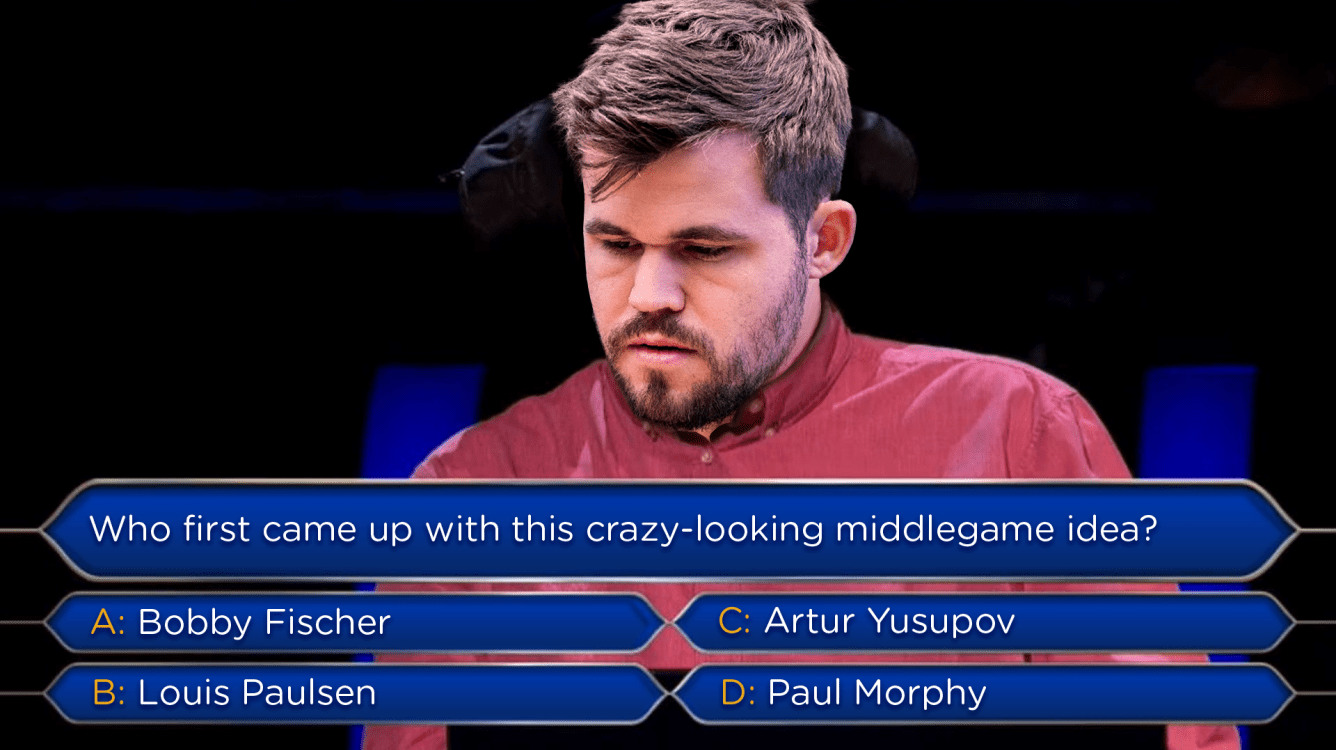
Pushing Your G-Pawn And Exposing Your King For The Win! But Who Did It First?
There are thousands of ideas in chess. Some of them are very basic, and others are so complicated that you cannot help but think: "Who was the genius? Who came up with this idea first?" Unfortunately, in most cases, we will never know the answer. Think about it, even openings aren't always named after their inventors. If you want an example, just check what Wikipedia says about Alekhine's defense: "The opening is named after Alexander Alekhine, who introduced it in the 1921 Budapest tournament in games against Endre Steiner and Fritz Sämisch." Oh really? What about the following game played in 1893?
There are hundreds of examples like this. As a matter of fact, it seems to me that chess ideas are rarely named after their true inventors. The reason for this sad phenomenon is very simple: in most cases, it is practically impossible to say who played the particular idea first. However, I know one case where a very obvious inventor is not getting the credit. I am talking about the so-called Greek gift sacrifice. Don't ask me who came up with this bizarre name or why. Nevertheless, one thing is clear to me: it is supposed to be called the Greco sacrifice after the great Italian player who was probably the best in the world at his time. Here is how he did it:
Now let's fast forward from the 1600s to our time, from one "best in the world" to another one. Here are arguably the most important games of last year's world rapid championship.
You can find detailed annotations to this exquisite game here. In this article, I would like to concentrate on GM Magnus Carlsen's fascinating move, which looks absurd at first glance. Why would White move his g-pawn, exposing his king? Carlsen's idea becomes quite clear in seven moves after his king goes to the corner to clear a path for his rooks to double for an attack along the g-file.
Of course, Carlsen didn't come up with this brilliant idea on his own: it was played many times before him. Here is, for example, a game played 40 years ago by two famous Soviet grandmasters:
Show this attacking pattern to any educated chess player, and you will hear: "Oh, Fischer's setup!" If you ask to elaborate, they will demonstrate to you the following iconic game:
While this is definitely the game that made this idea popular, for many people, it is also the game where this idea was born. Here are the quotes from two grandmasters: "This is the game where Fischer introduced this plan." and "Before the Fischer-Andersson game this plan was not known." I was surprised to read in a book by IM Mark Dvoretsky, whose name is a synonym for "chess culture," that when GM Artur Yusupov played the above-mentioned game: "He knew very well Fischer's game where, evidently, this plan was executed the first time." But what about another game by Fischer, which was played four years before his game vs. GM Ulf Andersson?
While this game is almost unknown and GM Bobby Fischer's opponent was much weaker than Andersson, still, it is exactly the same plan! Well, at least we have established that Bobby Fischer is the inventor of this attacking setup, right? Not so fast! Here is the game which was played 89 years before the game where Fischer executed this paradoxical plan the "first" time.
As you can see, Louis Paulsen, one of the greatest chess innovators, played all the key moves: Kh1, Rg1, g2-g4, Rg3, and then another rook went to g1!
I have absolutely no doubt that Bobby Fischer, who always meticulously studied classical games, saw this Paulsen brilliancy! So, have we finally established the name of the inventor? Was it Louis Paulsen? Again, I wouldn't rush to a conclusion. Here is a game that was played 19 years before Paulsen's game, where both players utilized this plan!
Considering that this is the most famous match played by Paul Morphy and considering that he was Bobby Fischer's favorite player, there is zero doubt that Fischer saw this game. Moreover, who knows, maybe this is the game that caused the following famous Fischer quote:
"A popularly held theory about Paul Morphy is that if he returned to the chess world today and played our best contemporary players, he would come out the loser. Nothing is further from the truth. In a set match, Morphy would beat anybody alive today."
While I am tempted to declare Morphy the inventor of this idea, I wouldn't be surprised if our readers will find even earlier games where this idea was implemented. You don't need to be a genius like Morphy to produce something brilliant. Just use your creativity! For example, here is a game of my student, who is a USChess 1800+ player.
Isn't it an extremely beautiful game? The harsh reality is that it was a G/30 game and when it was time to deliver the final combo, which would start with 19.Bxh7, my student was low on time and quickly played 19. Rh4? which allowed Black to stay in the game and eventually even win. Nevertheless, I am extremely proud of my student. Even though she didn't know Fischer's games or any of the games shown in this article, she found all the key moves: g4, Kh1, Rg1, and Rg4 on her own!
Even if we never truly know the name of the chess player who played this brilliant attacking setup first, I hope this article will help you to checkmate your opponents in your own games!






